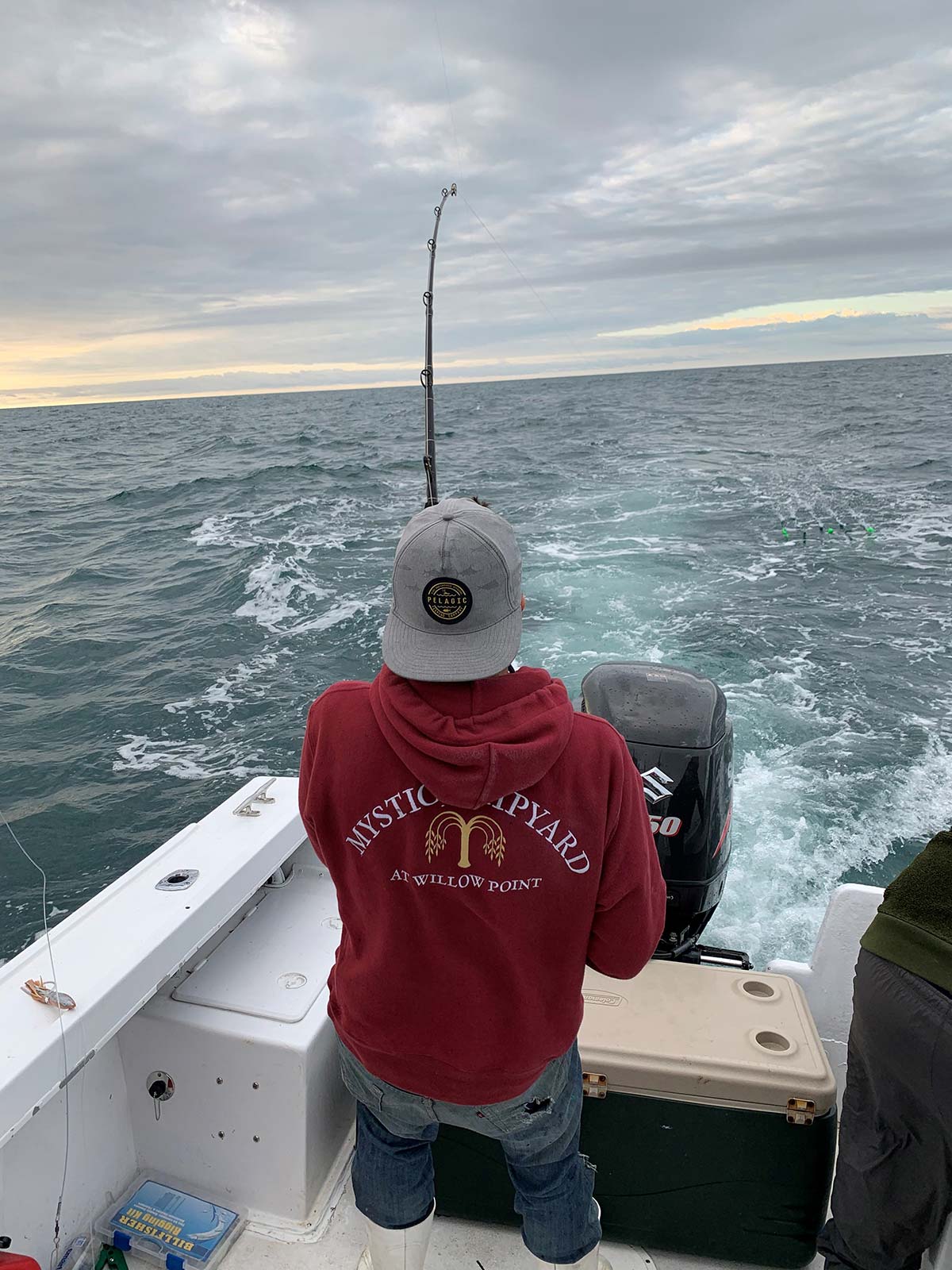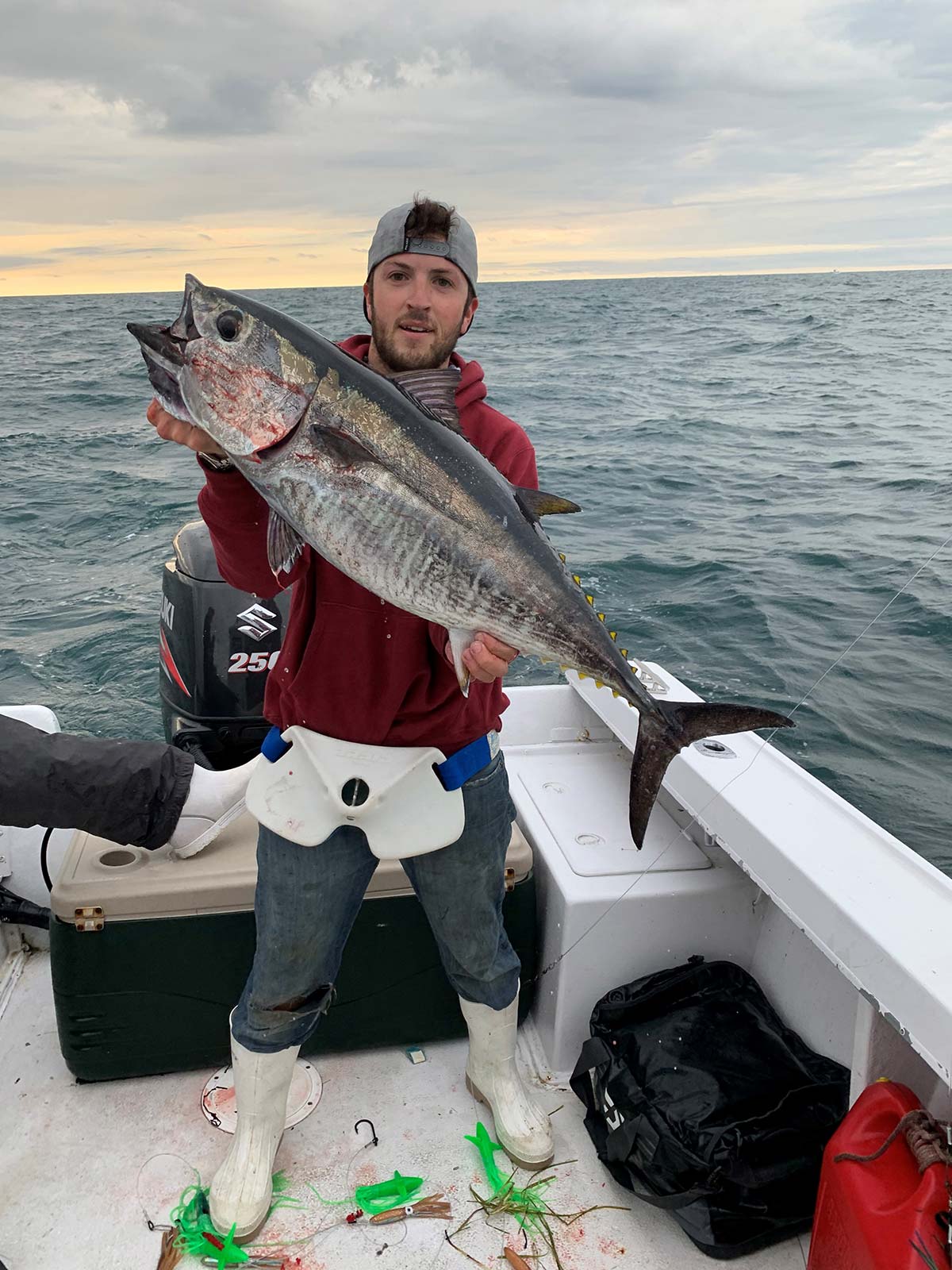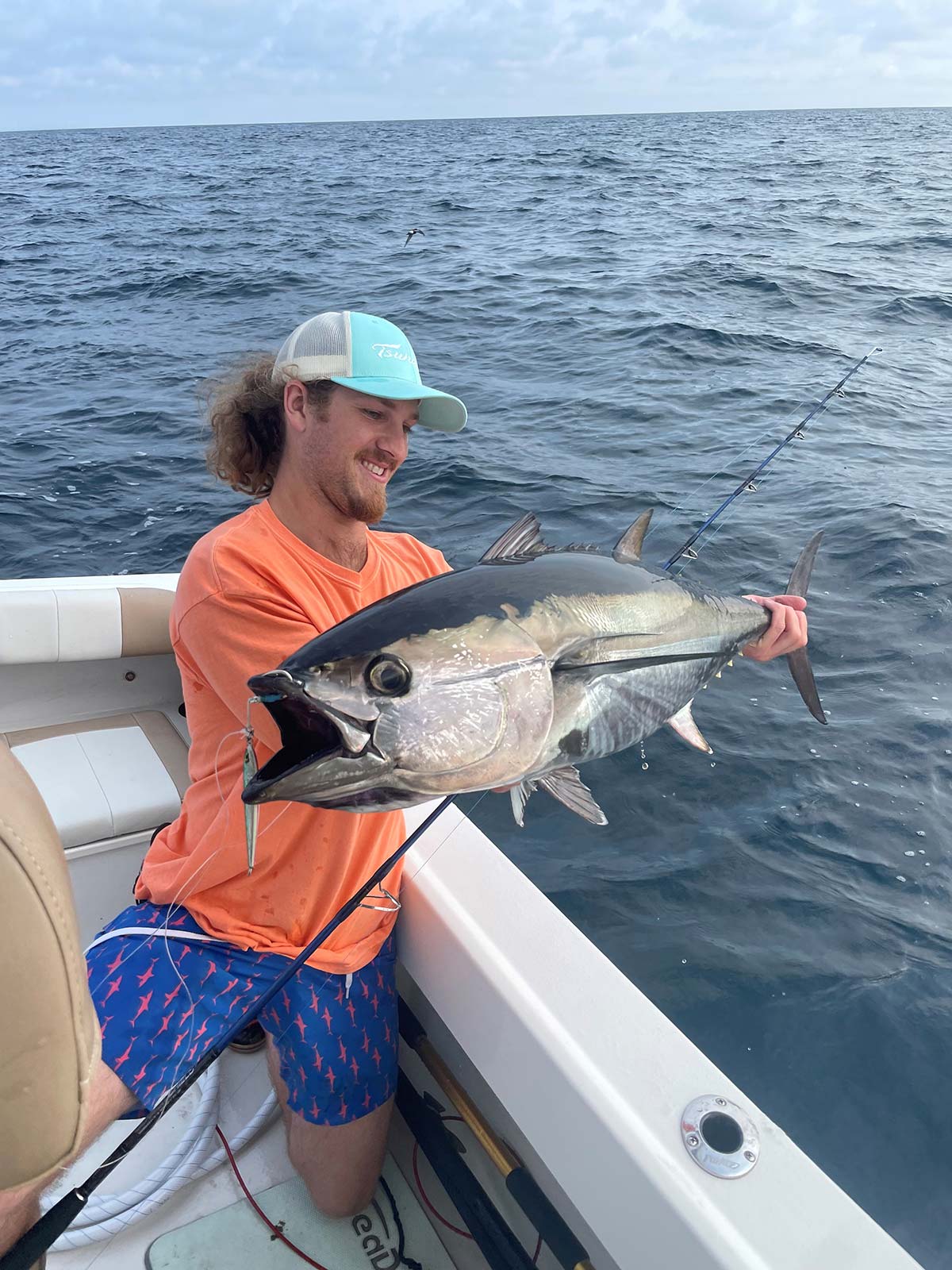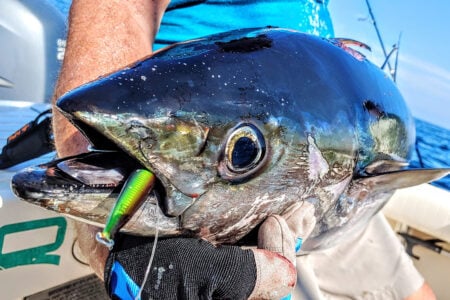
Troll Block Island’s offshore waters and catch tuna fever!
Schoolie bluefin tuna are a beast all their own and have long been one of my favorite fish to target. A little over a year ago, I purchased my first boat, a Steiger Craft 23 Chesapeake 1989. From the moment I put that boat in the water, I knew I wanted to push it as far as it could go, and the nearshore bluefin fishery became my ultimate goal.
Of course, running 20 miles or more from the dock in a 23-footer means you really have to pick your days. Summertime in New England is known for stable weather, but things can change in a blink when you’re out on the water, in fact it’s quite common for calm mornings to give way to stiff afternoon winds and the seas will change their mood in a heartbeat. If I see winds exceeding 15 to 20 mph (especially from the south) and anything bigger than 3-foot seas, I’m staying inshore and fishing for something else. While we’re on the subject of safety, you should always bring along extra fuel, I typically bring an additional 12 gallons stored in Jerry cans for a tuna run.
Tackling Tuna
I generally stick with 30- to 80-pound class tackle on my boat, and Avet 30s and 50s are my personal favorites. These reels can handle an array of fish species and will cover the full spread of sizes you’re likely to encounter. I spool these reels with 300 to 500 yards of hollowcore backing, usually 80- to 100-pound Jerry Brown spliced to a 200-yard topshot of the same strength mono with a heavy-duty snap swivel for attaching my lures. This combination is key when trolling at 4 to 7 knots—the mono provides ample shock absorption and the hollowcore offers plenty of line capacity when one of these offshore super-athletes goes on a tear. For the single lures, like jigs and plugs, I use 30 to 80 class rods and bump up to 50 to 100 for larger presentations like bars and chains. I use Star Rods for all my tuna fishing because they are well made and offered at a decent price. Running south of Block Island like I do, the average tuna run 30 to 50 pounds, but I have caught them from literally the size of a football all the way up to as big as me. You never know what you might run into.

Lucky Number 7
There are a wide variety of lures that can be used to as part of your small boat spread. It can be challenge to put together a diverse spread when running a small boat or a center console that features a beam of 8 feet or less. The best days for small boat tuna fishing are calm days, and my experience suggests that ‘splash’ is something you should focus on when the seas are especially calm, there’s definitely some benefit in ‘creating your own whitewater.’ I like to use sidetrackers for the outermost offerings in my spread. I feel they offer a twofold advantage; they widen your spread considerably and they create some splashing of their own which draws attention and may help to camouflage your line as well.
On the next two rods I like to fish daisy chains coupled with a bird to create even more splash. I rig my birds so that I can remove them if needed, when the seas get a little snottier, I’ll put the birds away. I prefer to rig the sidetrackers and the daisy chains with bulb squids, I just have great luck on them and they hold up really well. I have had success on a wide range of colors, some of my favorites are classics like zucchini, green machine, black/purple and rainbow. But I will also run natural colors at times that imitate squid, halfbeaks, sand eels, mackerel and other baitfish you might see on the tuna grounds. They all work well and have their time and place. But if I had to choose a few ‘must-have’ colors it would be zucchini and green machine for daylight, black/purple for low-light conditions and on those bluebird days with clear skies and high, bright sun, sometimes a solid white squid will get it done better than anything else.
On the next set of rods I run a pair of leadhead jigs or deep-diving plugs. For the jigs I typically reach for 9-inch range Ron-Z’s or Hogy’s; both work very well, I have really liked the Harness Jigheads from Hogy, they troll great and have proven that they can handle the abuse. If I opt for the diving plugs, I run Nomad DTX Minnows, my favorite colors are phantom (black/purple), sardine and mackerel. Sometimes that wiggle of the soft plastic or the rattle of a plug is the only thing that will draw strikes.
For the seventh and final rod, running down the center, I fish one bait and one bait only: the classic cedar plug. These tried and true baits have not changed much throughout their history, but they catch fish. And if my experience is typical, cedar plugs seem to have an uncanny knack for hooking larger fish. This seven rod spread has worked very well for me, it gives a lone fish plenty to look at and it gives a wolf pack of these incredible fish an array of options to choose from.

Closing The Deal
When it comes time to land one of these fish, it is imperative that you have the right gear if you want to do it safely and responsibly. These fish are powerful and may be quite large. You’ll want to have a range of gaffs (various handle lengths) at your disposal for getting smaller fish into the boat as quickly as possible. If the fish is large, you will need multiple people, multiple gaffs and a tail rope. I like to have a harpoon ready to go as well, this qualifies as one of those things I’d rather have ready rather than find myself wishing I had one with a big fish circling below the boat.
| BLUEFIN AROUND THE BLOCK |
| Hot spots such as The Gully, Coxes Ledge, Tuna Ridge and Butterfish Hole are all accessible in a smaller boat on the right day. Make sure to follow the marine forecast and extra fuel so that you can get there and back safely (and bring plenty of ice). Once you’ve done that you can concentrate on enjoying one of the most incredibly fisheries New England has to offer. |
South of Block fish in the 80- to 150-pound class are not out of the question and you will need to have the right gear to gain control of these fish too so you can pop the hook for release. You may want to buy a ‘swim hook’ to keep that fish under control and swimming beside the boat. But even a carefully-placed gaff in the lip will offer control while removing a hook before release.
‘Jig and pop’ tuna fishing gets all the publicity, but trolling is a very effective way to hook up and it’s also the best way to introduce yourself to the sport. It will allow you to gain an understanding for how powerful these fish are and also offer you plenty of practice for dealing with them at boatside, landing one on spinning gear is a completely different animal. You’ve heard the saying ‘walk before you run’ well, in the case of small boat tuna fishing, learning the ropes by trolling would be more of a case of ‘run before you sprint.’


